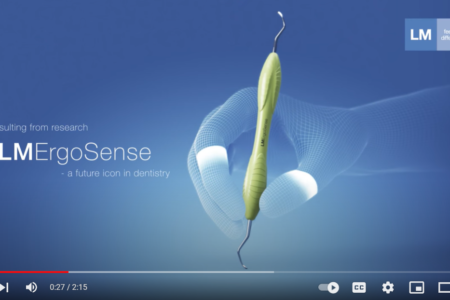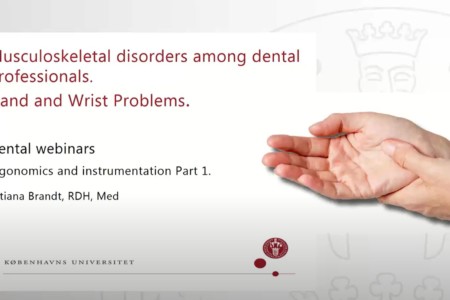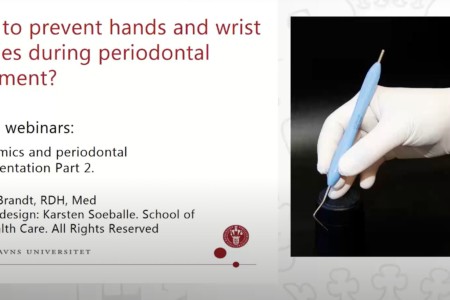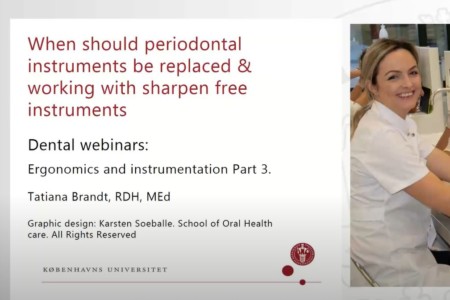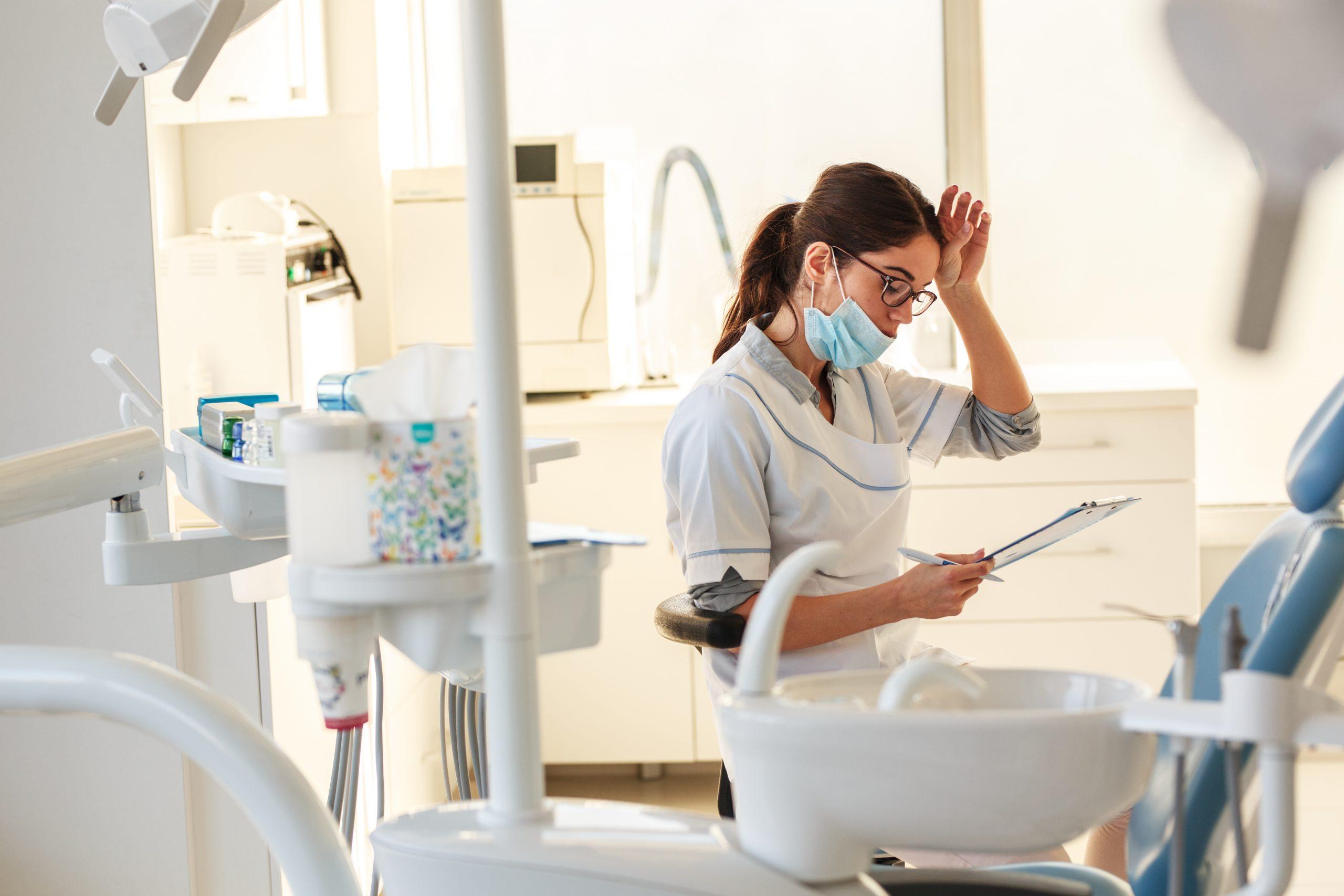
Dental hand instrument ergonomics
When holding the instruments for approximately 2,000 hours each year, the design, weight and feel of the instrument are crucial for the dental practitioner in terms of his/her performance and productivity.
How to define the ergonomics of a hand instrument? Firstly a non-slip, natural grip on an instrument are essential. Secondly a lightweight and optimized design prevents effectively occupational diseases. Thirdly a good tactile sensitivity and easy handling of the instrument guarantee the best clinical results. Reliability, wear resistance and comfort are the features that will be evident for both, the dentist and the patient.
Choosing the handle makes a difference
Choosing the most ergonomic hand instrument can make a big difference in terms of discomforts and disorders when performing dental work. It is by no means insignificant what the diameter of the hand instrument’s handle is or what the material of the grip surface is.
The natural, non-slip grip of the instruments has been recognized to be comfortable and efficient all around the world and result into a significant reduction, or elimination, of hand-fatigue, finger and hand pain as well as prevention of CTS (Carpal Tunnel Syndrome).
Soft and hygienic silicone handle
The pleasant silicone on the hand piece or instrument causes less strain on dental clinician’s wrist and fingers. The soft material also dampens the ultrasonic vibrations and keeps hands warm, and furthermore the smooth and even surface of the silicone has been tested to be more hygienic than knurled and uneven instrument surfaces.
An ergonomically designed instrument in combination with a comfortable grip and high tactile sensitivity gives the best clinical result.

ERGONOMICS FOR ORAL HEALTH PROFESSIONALS by FDI
Ergonomics guidelines for oral health professionals by FDI
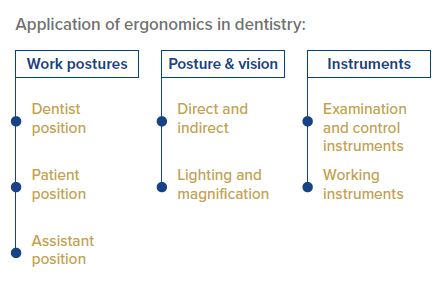
According to World Dental Federation (FDI)* ergonomics in dentistry should strike a balance between keeping the dentist healthy and providing efficient treatment.
Ergonomics in dentistry means preventing musculoskeletal problems by enabling the dentist to adopt a more natural and comfortable posture, achieving patient-friendly treatment, improving treatment efficiency, and achieving treatment accuracy.
Image from Publication “Ergonomics and Posture Guidelines for Oral Health Professionals”, Copyright 2021, FDI World Dental Federation.
Choice of working instruments
In their guidelines FDI states that the least amount of muscle load and pinch force is needed when dental professionals use instruments with a large diameter, textured handle, and a light weight. Dental professionals could benefit from alternating tools with different diameter sizes to reduce the duration of prolonged pinch gripping. Furthermore, silicone instrument handles are likely to improve hand comfort, reduce hand fatigue, and improve grip and pinch strength. The right grip is a light, pen-like grip, using a fulcrum (finger rest) either intra-orally or extra-orally. This helps to stabilize the clinician’s hands during treatment, increasing the precise control needed and reducing muscle load and fatigue.*
*Source: Ergonomics and Posture Guidelines for Oral Health Professionals, Copyright 2021 FDI World Dental Federation
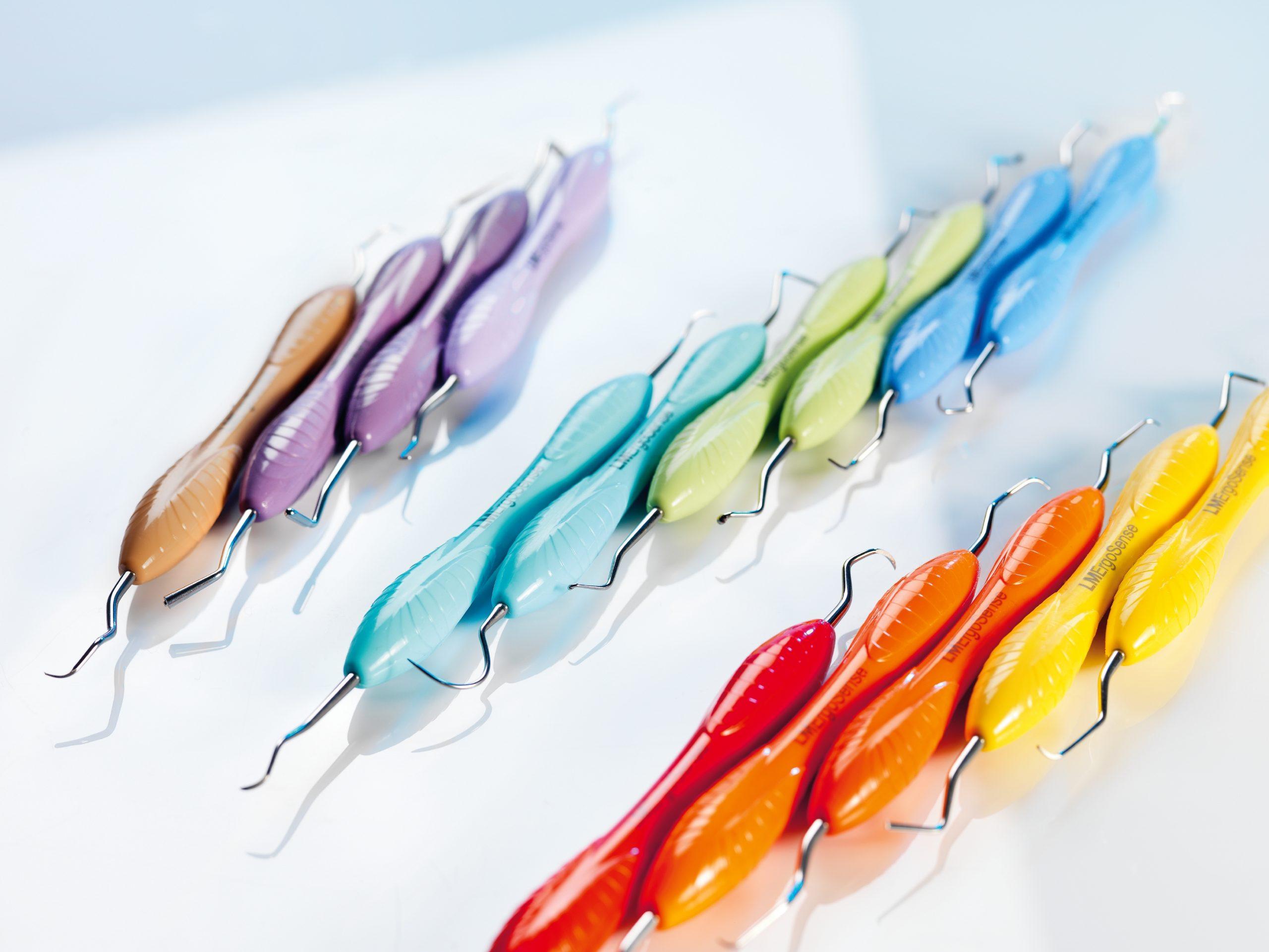
Pioneer in instrument ergonomics
Reliability, wear resistance and comfort are the features that will be evident for both, the dentist and the patient. Non-slip natural grip, lightweight and optimized design, and good tactile sensivitity and easy handling – these are the guiding principals how Pekka Kangasniemi, DDS, one of the founders of LM™, defined instrument ergonomics already in the 1980s. Still today the ergonomics is the guiding light of LM™’s product development. An intensive research and continual product development are guided by cooperation with dental professionals.
Exceptional handle ergonomics with LM-ErgoSense®
The focus is on ergonomics in our hand instrument development without losing sight of efficiency. The LM-ErgoSense® hand instrument meets both of these requirements and is truly a unique combination of ergonomic design and integrated new RFID technology. It has been the outcome of intense research and product development in close cooperation with dental clinicians and professionals. An ergonomic, high quality hand instrument naturally feels good in the hand.

Rated as the best hand instrument
The value of a truly ergonomic instrument grip can never be emphasized enough as revealed in several
scientific studies. A hand instrument with thick silicone handle has been found to be more usable, cause lower
perceived strain and to be more productive than those with thinner handles (1). LM-ErgoSense® was rated
as the best in ten out of fourteen specified usability features compared with the other tested instruments in a
dental scaling simulation (1). It was also ranked as the best instrument.
“Feels great in the hand.”
Most participants in the authentic scaling part of the study considered the LM-ErgoSense® silicone handle as their favorite due to the enhanced grip, comfort and instrument’s functional design. The participants’ evaluations were based on their active use of the LM-ErgoSense® in authentic clinical work. In another study focusing on ergonomics, usability characteristics and work productivity using different manufacturers’ hand instruments the thick, silicone coated LM hand instruments were the most preferred choice in regard to all 18 usability criteria used in the test (2).
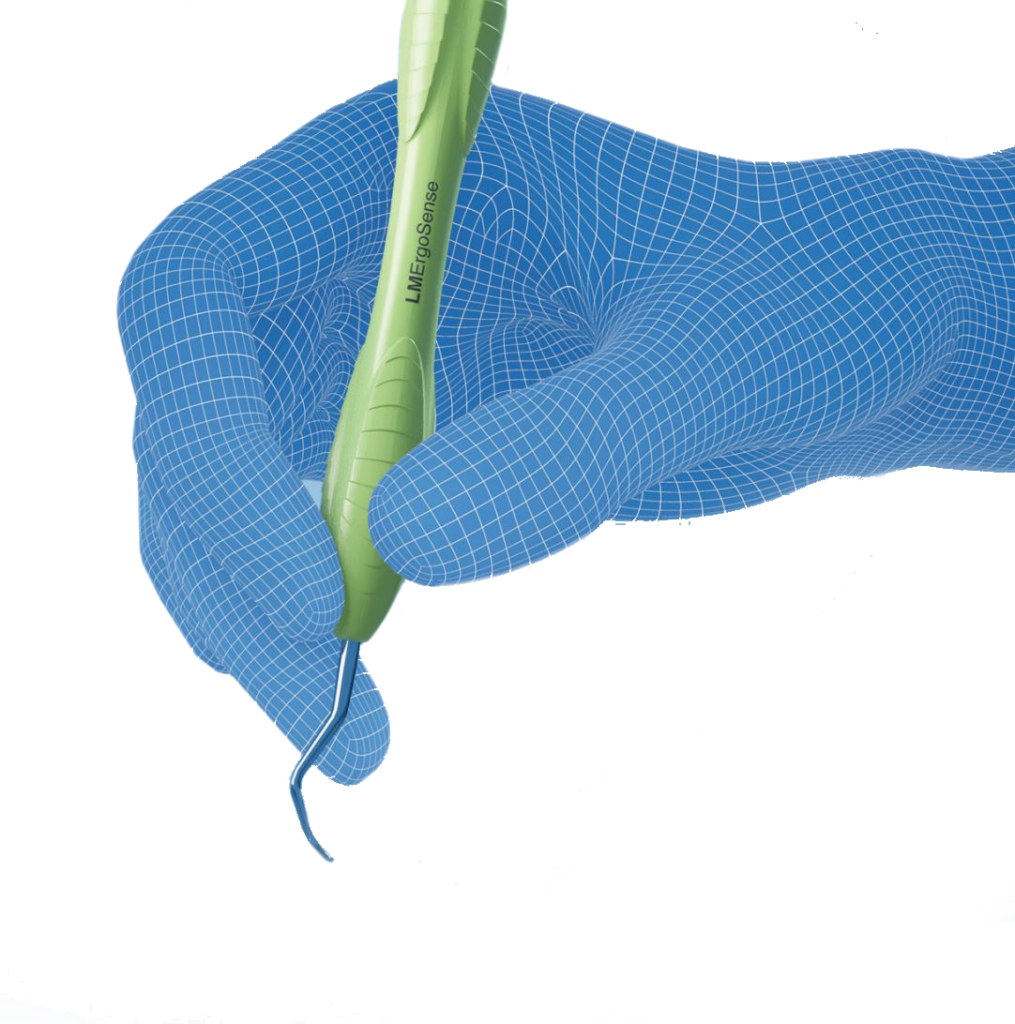
Intelligence inside – choose smart!
LM-ErgoSense® instrument handle is a unique combination of ergonomics and RFID technology, as it offers offers new opportunities with its built-in RFID technology, which together with scanning readers and software create a unique LM Dental Tracking System™.
All the LM™ instruments with LM-ErgoSense® handle are available with integrated RFID chip enabling a complete and reliable traceability by LM DTS™.
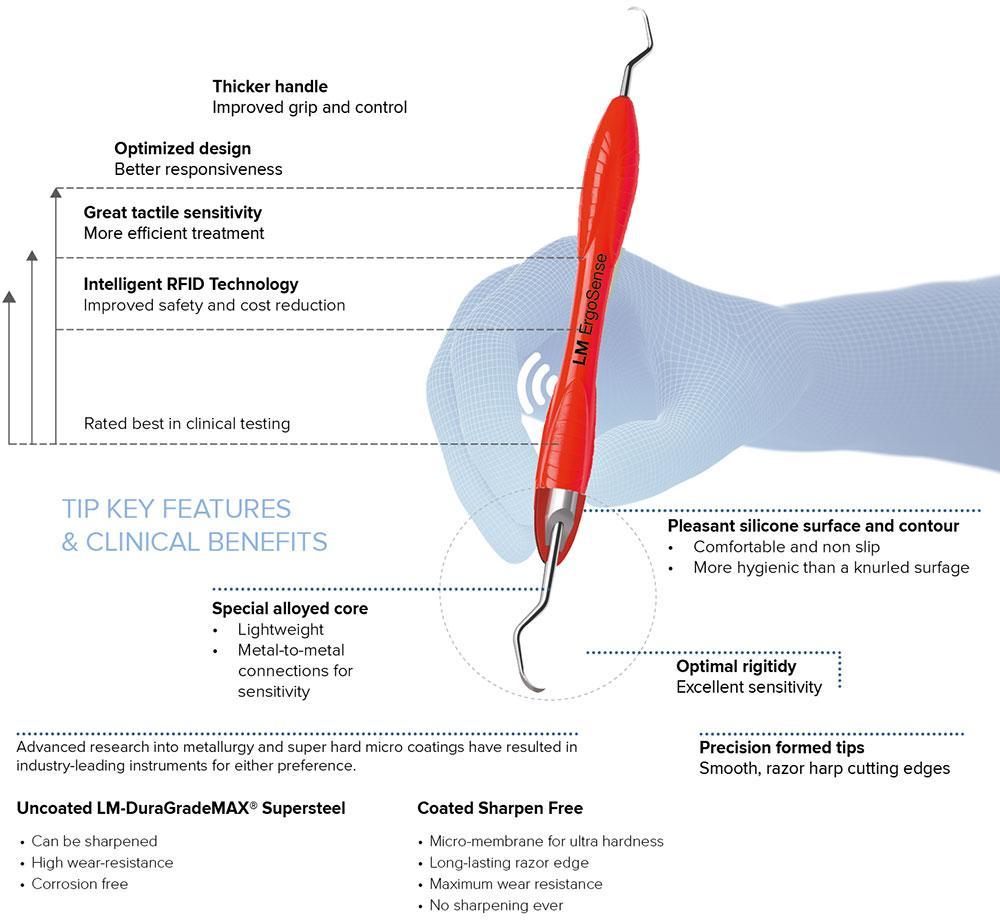
Reference studies:
(1) Sormunen E., Nevala N: Evaluation of ergonomics and usability of dental scaling instruments; Dental scaling simulation and Field study, part III. Finnish Institute of Occupational Health, LM-Instruments Oy.
(2) Nevala N, Sormunen E, Remes J, Suomalainen K: Ergonomic and productivity evaluation of scaling instruments in dentistry. The Ergonomics Open Journal 2013; 6, 6-12.








